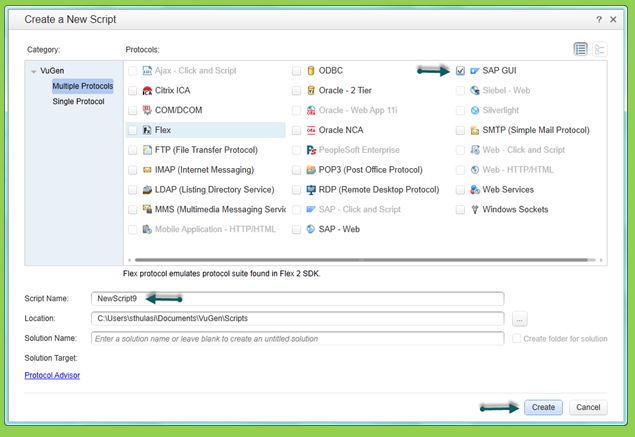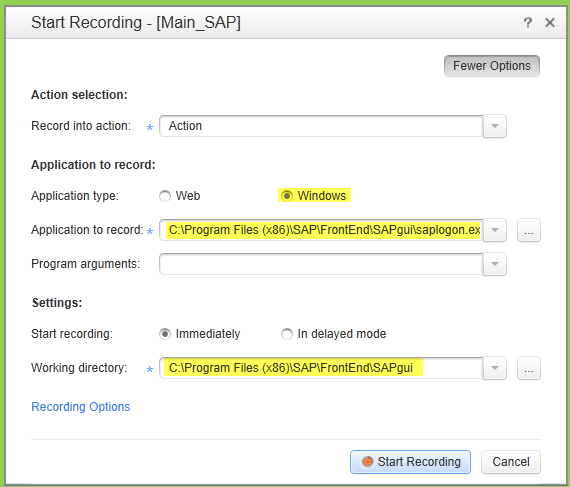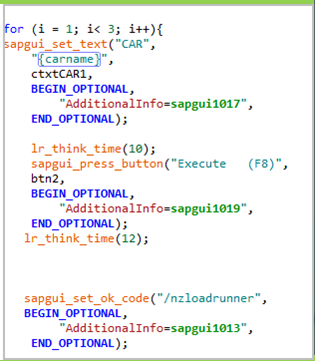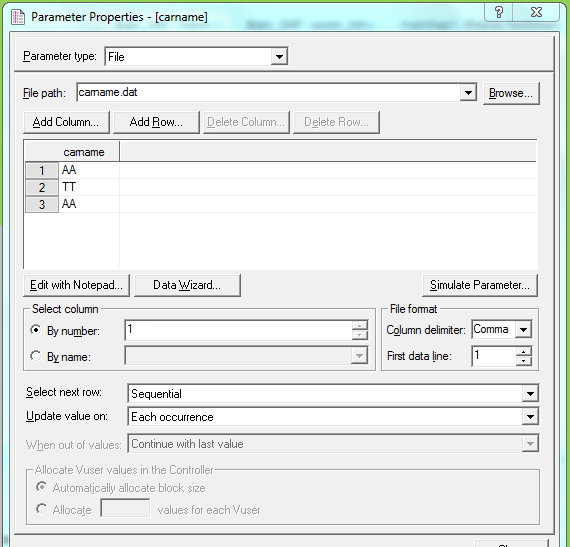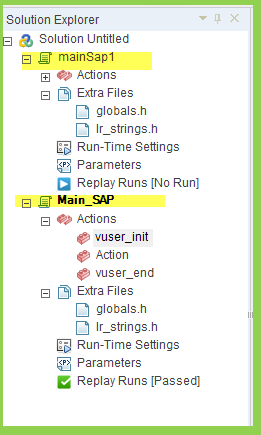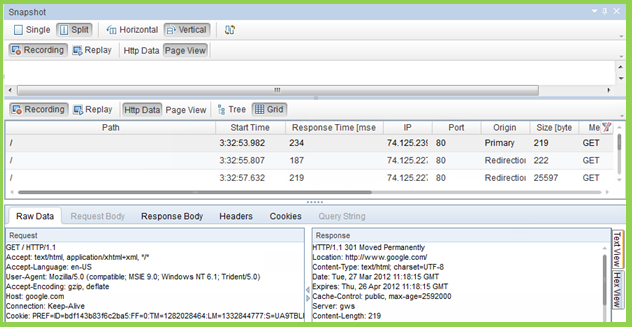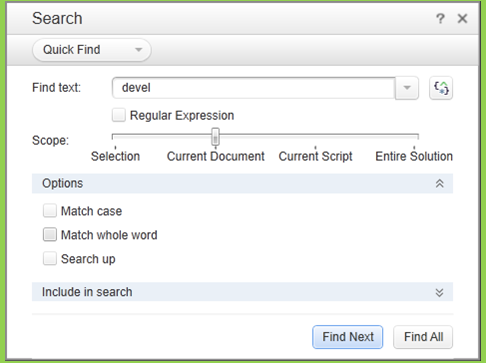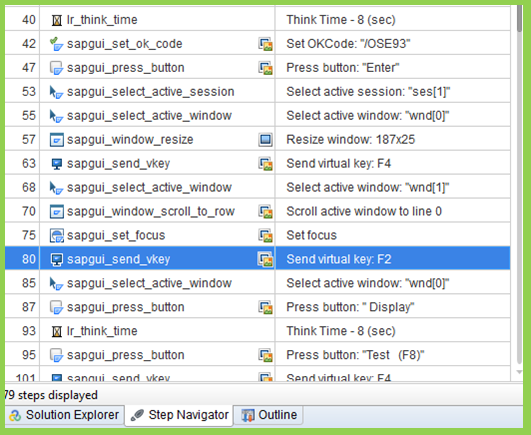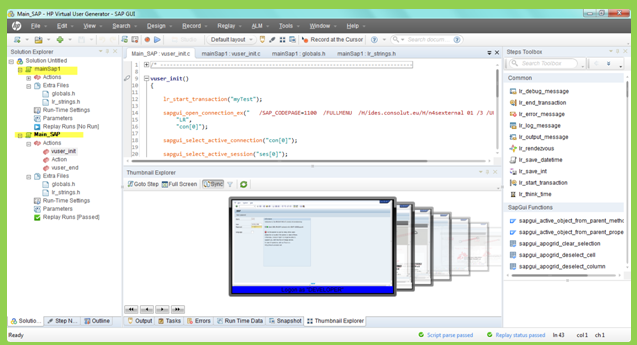LoadRunner is an industry-leading performance and load testing product by Hewlett-Packard (since it acquired Mercury Interactive in November 2006) for examining system behavior and performance, while generating actual load.
LoadRunner can emulate hundreds or thousands of concurrent users to put the application through the rigors of real-life user loads, while collecting information from key infrastructure components (Web servers, database servers etc). The results can then be analysed in detail, to explore the reasons for particular behaviour.
Consider the client-side application for an automated teller machine (ATM). Although each client is connected to a server, in total there may be hundreds of ATMs open to the public. There may be some peak times — such as 10 a.m. Monday, the start of the work week — during which the load is much higher than normal. In order to test such situations, it is not practical to have a testbed of hundreds of ATMs. So, given an ATM simulator and a computer system with LoadRunner, one can simulate a large number of users accessing the server simultaneously. Once activities have been defined, they are repeatable. After debugging a problem in the application, managers can check whether the problem persists by reproducing the same situation, with the same type of user interaction.
HP LoadRunner is an automated performance and test automation product from Hewlett-Packard for examining system behaviour and performance, while generating actual load. HP acquired LoadRunner as part of its acquisition of Mercury Interactive in November 2006.HP LoadRunner can simulate thousands of concurrent users to put the application through the rigors of real-life user loads, while collecting information from key infrastructure components (Web servers, database servers etc.)The results can then be analyzed in detail, to explore the reasons for particular behavior.
LoadRunner supports various application protocols; Flex AMF, Citrix ICA, Remote Desktop Protocol (RDP), ERP/CRM (e.g. SAP, Oracle eBusiness, Siebel and PeopleSoft), Databases, Mail Clients, Web Services, AJAX TruClient (with V.11.0).
LOADRUNNER COMPONENTS
apart from these components there are other components like LoadRunner Agent process.
Vugen:
The purpose of Vugen is to create scripts for single user and do the required enhancements to the script in a such a way that it can be run for multiple users.
Controller:
The purpose of Controller is to Run the load test and monitor the servers during load test execution. In loadrunner language is to create scenarios and the run the loadrunner controller scenario. Generally Controller installed in a client environment machine which will be configured with loadrunner license for defined number of users. Performance engineers to connect to this machine to run the load test. If the client has multiple projects and multiple performance engineer resources, client may setup mutiple controller with multiple licenses.
LoadRunner can emulate hundreds or thousands of concurrent users to put the application through the rigors of real-life user loads, while collecting information from key infrastructure components (Web servers, database servers etc). The results can then be analysed in detail, to explore the reasons for particular behaviour.
Consider the client-side application for an automated teller machine (ATM). Although each client is connected to a server, in total there may be hundreds of ATMs open to the public. There may be some peak times — such as 10 a.m. Monday, the start of the work week — during which the load is much higher than normal. In order to test such situations, it is not practical to have a testbed of hundreds of ATMs. So, given an ATM simulator and a computer system with LoadRunner, one can simulate a large number of users accessing the server simultaneously. Once activities have been defined, they are repeatable. After debugging a problem in the application, managers can check whether the problem persists by reproducing the same situation, with the same type of user interaction.
HP LoadRunner is an automated performance and test automation product from Hewlett-Packard for examining system behaviour and performance, while generating actual load. HP acquired LoadRunner as part of its acquisition of Mercury Interactive in November 2006.HP LoadRunner can simulate thousands of concurrent users to put the application through the rigors of real-life user loads, while collecting information from key infrastructure components (Web servers, database servers etc.)The results can then be analyzed in detail, to explore the reasons for particular behavior.
LoadRunner supports various application protocols; Flex AMF, Citrix ICA, Remote Desktop Protocol (RDP), ERP/CRM (e.g. SAP, Oracle eBusiness, Siebel and PeopleSoft), Databases, Mail Clients, Web Services, AJAX TruClient (with V.11.0).
LOADRUNNER COMPONENTS
- VuGen (Virtual user generator)
- Controller (License based component)
- Analysis
apart from these components there are other components like LoadRunner Agent process.
Vugen:
The purpose of Vugen is to create scripts for single user and do the required enhancements to the script in a such a way that it can be run for multiple users.
Controller:
The purpose of Controller is to Run the load test and monitor the servers during load test execution. In loadrunner language is to create scenarios and the run the loadrunner controller scenario. Generally Controller installed in a client environment machine which will be configured with loadrunner license for defined number of users. Performance engineers to connect to this machine to run the load test. If the client has multiple projects and multiple performance engineer resources, client may setup mutiple controller with multiple licenses.
Analysis:
Analysis will be used to Analyze the results and creare graphs and reports to present the performance test report to stake holders.

File Extensions:
VuGen : .USR is the file extension.
Controller : .lrs is the file extension. - -> .lrr
Analysis : .lra is the file extension
Loadrunner environment:Number of machines required in loadrunner test environment. In general you can use one machine by installing all the components one box.
Analysis will be used to Analyze the results and creare graphs and reports to present the performance test report to stake holders.

File Extensions:
VuGen : .USR is the file extension.
Controller : .lrs is the file extension. - -> .lrr
Analysis : .lra is the file extension
Loadrunner environment:Number of machines required in loadrunner test environment. In general you can use one machine by installing all the components one box.
1 Machine: Controller, Vugen, Anaylysis and Loadrunner agent process. The disadvantage is we may not able to run bigger load test.
Multiple Machine:
Controller1 - 1 Machine - 1000 user license
Load generators - 3 Machines
Controller2 - 1 Machine - 3000 user license
Load generators - 3 Machines
Controller4 - 1 Machine - 2000 user license
Load generators - 3 Machines
Multiple Machine:
Controller1 - 1 Machine - 1000 user license
Load generators - 3 Machines
Controller2 - 1 Machine - 3000 user license
Load generators - 3 Machines
Controller4 - 1 Machine - 2000 user license
Load generators - 3 Machines




